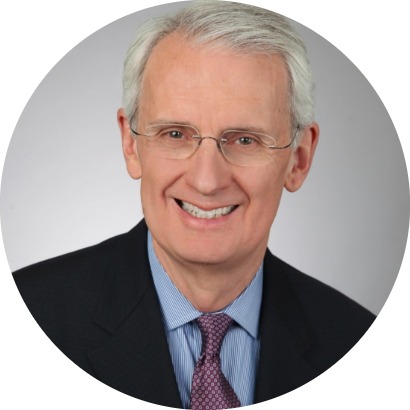The introduction to this series described this first essay in the following terms:
The first article will lay out what we mean by the post-carbon caring society.
Here we will make a bold claim. That claim is that we now live in a caring society that puts carbon in its place. Now, this claim is both preposterous and true. It is as true as it would have been to say “we now live in an automotive age” the moment the first Model T came off Ford’s production line. There was no highway system, no suburbs, no steel-belted radial tires, but we were in the automotive age, nonetheless. It is as true as it would have been to say “we now live in the age of instant universal constant connectivity” the moment Steve Jobs stood on the stage at Apple in 2007 and announced the new iPhone. There were few apps, little in the way of social media apps but we were nevertheless already in the age of universal constant connectivity. It is in that sense that we say, “we now live in a caring society that puts carbon in its place.”
Scouting out the future with insights from 250 collaborators
No one on Earth today knows the shape of future society. However, at Common Earth we believe that anyone who cares to look can start to see outlines of the society coming into being. For us, it is not a wish that it be “caring” or “post-carbon” when it comes to energy use. These are the shapes we are seeing when we peer into the mist that is the future. In this and in future installments in this series we will share where we are looking to start seeing some of these future shapes.
For the last two and a half years Common Earth has run multiple courses each quarter designed for those concerned about the climate crisis and questioning what to do about it. Each course runs for eight weeks and has generally 10-12 participants and 2 or 3 facilitators. The courses have 2-hour Zoom sessions twice per week with individual prework between sessions. There are two modules of courses and a large percentage of those that complete the Module 1 go on to an additional 60 hours of study in Module 2 the following quarter. The courses offer insights into the climate crisis and the current socio-economic structures that perpetuate the crisis. They fill in knowledge gaps by exploring in some depth, systems thinking, modern cosmology, the nature of human experience, the mathematics of growth, thermodynamics, economics, and biomimicry. Out of these courses there has begun to emerge an understanding of the seriousness of the crisis humanity faces and direction for the next steps to take. There have been over 250 people from a total of 35 countries each spending on average 100 hours or more on Common Earth courses. That is over 25,000 hours of participant study and cross-culture sharing of perspectives. The staff at Common Earth have probably spent an additional 15,000 hours, organizing, facilitating the courses, and working on demonstration projects. So Common Earth has collected insights from over 40,000 hours of global conversation. These rich conversations continue.
Those of us involved in the Common Earth courses sometimes use the image of “scouts” to describe what we are doing. In the lore of the American settler expansion across the continent the wagon train holds a special place in the story. The wagons carrying the settlers would go in groups and would send out scouts on horseback ahead of them to find the best path forward. The scouts would find the best places to ford rivers and would be careful not to lead the wagons into box canyons with no way forward. So, at Common Earth we are out to find the way forward. The new role of the scout is to find the way forward for society that can be inclusive of all the peoples of the world. So, this is the initial report of 250 scouts. Here are five aspects of what we see emerging.
Here are a few glimpses of the future:
Radical societal shift
First, the new society will not be at all like our current society. That is, it can be stated categorically that we are in a period of whole systems change where all the structures of society will undergo transformation. This includes, how we feed ourselves, what and how we manufacture, how our politics work and how our social systems organize our day-to-day life. Because it is crucial to understand this point the whole of the next essay in this series will address why this is such a certainty. But the central point that makes it a certainty is that our current society is an energy hog and if we allow it to continue it will make human life not just difficult but impossible. The new society will use a fraction of the energy the current society uses and therefore will find completely new ways to live. Please read the next installment of this blog if you have any doubts.
Both global and local
The second insight about the new society is that it will be both global and local. Many participants in the Common Earth courses have been surprised at how similar the fundamental issues they each face whether they live in Nairobi, or Denver or Dublin or Kolkata or Belo Horizonte. When people with different experiences and cultures and circumstances listen to each other a mutual respect grows that just seems astounding. In the Common Earth courses, participants grow to be friends. When any person seems to be having a difficult time others in the course often from somewhere else in the world administer a generous helping of UPR – unconditional, positive regard. So, global networks of local caring people are now possible. These networks will share methods and moral support.
The expansion of agency
The third shift is one of agency. There is much talk these days of “freedom”. Many past shifts in society have increased the freedom experienced by large segments of society. The independence movements in former colonies, the abolishment of slavery, the women’s rights movements, and the civil rights movements are all examples of expansion of freedom. Freedom does not mean one can do the impossible. The impossible is not just difficult. It is impossible because it contravenes a law of nature. No person can jump 1000 feet in the air. That is impossible. As we will see, it is also impossible for our society to continue on its current path with its demand for rapidly growing supplies of energy. Our freedom then is a constrained freedom – constrained by the laws of nature.
The next expansion of freedom, then, does not entail using more energy, resulting in growing GDP and creating more wealth. The next expansion of freedom will come from an expansion in agency. Local people will find that if they band together in community, they can create the society they would choose. They will find that community gives them powerful leverage, much like previous generations found unions, and farmers’ cooperatives and credit unions extended their individual abilities to change social structures. To do this, all that is needed is for local people to recognize their own power. Rather than waiting for or pressuring governments or corporations to make change, people can band together to bring about change directly. Corporations and governments will follow. This shift in agency always comes with a shift in understanding. If the system needing change is external to the individual, agency does not expand. That perception leads to victimhood and despair. But when the individual sees the change as something internal, then they can do something about creating change. That perception leads to increased agency.
Regenerative agriculture and the food system
Today, in the United States, 40% of the arable land is used to create feed for animals. If grazing lands are included this number rises to 60%. At the same time, the way these crops are grown and the animals themselves are major sources of greenhouse gases.
Using these lands for growing human food with regenerative agriculture methods will shift the food system from being a major part of the climate problem to being a major part of the solution. Regenerative agriculture takes carbon from the air and puts it in the soil. The result is both a reduction of CO2 in the atmosphere and an improvement in the quality of the soil thereby increasing yields. The fourth shift then, is a change in what we eat and how we grow it.
A shift of identity – the “I”
The fifth and perhaps the biggest shift we see in the coming age is the shift in who we see we are. What do we mean by the word “I”? It is enough to say here that the expansion of our concept of who we are will provide the energy for all the other shifts. We will examine that shift in more detail in the fourth paper in our five-part series.
So those five aspects of the new society are already taking form. Whole systems change is happening that is both global and local. Human sense of agency is expanding as groups band together in community to get things done. And there is a growing determination at the local level to see industrial agriculture replaced with regenerative agriculture. Many now see that we can change our food habits and thereby force a revolution in agriculture. All of these societal changes will be driven by a shift in identity and a shift in identity will be driven by these changes. That reinforcing feedback loop is what will bring change fast enough to rescue society from the climate crisis.
The Post-Carbon Caring Society is not really new
There is one more thing we should notice about the caring society that puts carbon in its place. It has only dawned on humans recently that this society is not only desirable but also possible. However, we are just catching up with the rest of the natural world. When the world found that it was getting too hot for life to continue it invented photosynthesis and grew plant life to take carbon from the air and light from the sun and combine them in the soil. We humans have done the reverse. We have taken carbon out of the ground and put it in the atmosphere, heating up the earth.
All of nature works in reciprocity with its neighbors with the result that more life and more complexity develop. We have done the reverse. We have gone to war with other species and with our own species with the result of diminishing life on the planet – and doing this at an increasing rate. We have prided ourselves as being “intelligent life”, but we are surrounded by intelligence that we ignore. We haven’t learned nature’s first lesson that all of life must work on behalf of all of life.
Some of our readers may have seen the movie, “My Octopus Teacher.” That movie astounds us with the intelligence of the Octopus. I often think when we pride ourselves as being the intelligent ones, we think of intelligence as what is measured by an IQ test. If we gave the Octopus an IQ test it would not do well. But what if an Octopus gave us an IQ test? We would surely show up as the dumb ones.
The other night I watched a session of the Canadian TV show The Nature of Things on spiders. One image particularly stood out. It was a male spider looking for its mate. It stood on its back legs hanging onto a stem and sat up holding its front legs up so the “forearms” were vertical. It looked like a tower holding up cell antennae. The explanation is that the cells on those legs can smell the female at a distance, so they do act like tracking antennae. When we take time to notice, we find that the world and the universe, for that matter, are teaming with intelligence and much of it like that of the spider is far beyond our intelligence.
So, the move of humans to the Post-Carbon Caring Society is not something new. It is a return to our proper place in a natural world that will care for us if we only let it. That return will truly reshape every one of us.
© 2023 – David Patterson – All rights reserved.


